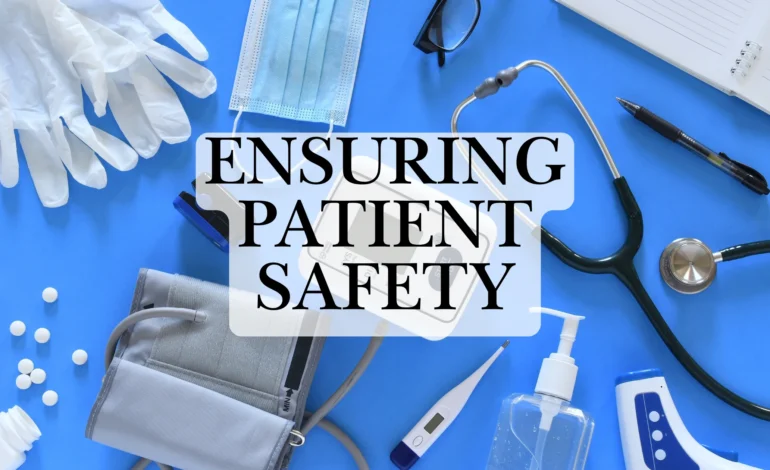
Ensuring Patient Safety: The Role of Medical Equipment Testing
In today’s innovative healthcare landscape, the instruments and devices at the heart of patient care must not only be advanced but also thoroughly tested for safety. The ramifications of using untested or poorly functioning medical equipment can be severe, affecting not just individual patients but the entire health system. Recognizing the crucial role of medical equipment testing in this context is vital for healthcare providers, manufacturers, and regulators alike. With lives at stake, this process helps ensure that medical advancements contribute positively to patient outcomes. Below, we will delve into the many facets of medical equipment testing and its significance.
Table of Contents
The Medical Equipment Testing Process Explained
The testing of medical equipment encompasses a comprehensive process involving multiple stages, each designed to evaluate different aspects of the device’s performance. Initially, devices undergo a series of bench tests to assess their basic operation and measure parameters like electrical safety, durability, and performance under various conditions.
After bench testing, devices may be subjected to clinical trials to observe their effectiveness and safety in real-world settings. These trials can range from limited pilot studies to extensive randomized controlled trials, depending on the nature and risk profile of the equipment.
Simulated use testing then plays a role, where the device is tested under conditions that mimic actual clinical scenarios to examine how well it performs in the hands of the healthcare professionals who will ultimately use it. Human factors engineering is particularly important here, ensuring that device design reduces the risk of user error and fits seamlessly into clinical workflows.
Innovations in Medical Equipment Testing: Ensuring Accuracy and Reliability
Innovation in medical equipment testing is revolutionizing the way healthcare technologies are validated. Cutting-edge methods, such as computer simulations and virtual modeling, allow for in-depth analysis of a device’s performance even before physical prototypes are built. This predictive approach can drastically reduce development costs and time to market for new innovations.
Moreover, automated testing platforms are increasingly being used to streamline the evaluation process, providing consistent and repeatable results. These systems can cover a wide range of conditions and scenarios, broadening the scope of testing beyond what is feasible through manual tests alone.
Wearable technology and remote monitoring devices are also paving the way for novel testing paradigms, where data can be collected and analyzed from actual use in real time. This approach can provide insights that are far more reflective of a device’s day-to-day performance and reliability in the field.
The Importance of Medical Equipment Testing for Patient Safety
Medical equipment testing is a critical step in ascertaining that devices work appropriately and align with established safety protocols. This process serves as a check against potential defects that could lead to patient harm. Such evaluations are not merely a regulatory hoop to jump through but are designed to maintain the highest possible standards in patient care.
Advanced diagnostic tools, life-support machines, and therapeutic devices are just a few examples where testing makes the difference between a successful treatment and a medical disaster. The intricacies involved in the development of medical equipment demand rigorous scrutiny to identify and correct any issues before they reach the clinical environment.
To underscore how central this aspect is to patient safety, specialists in medical equipment testing, like those involved in medical equipment testing, work tirelessly to assess and validate the functionality and safety of vital medical devices. Their expertise ensures that healthcare professionals can rely on the tools they need to deliver quality patient care.
The Impact of Medical Equipment Failure on Patient Safety and Healthcare Outcomes
The implications of medical equipment failure are formidable and multi-faceted, affecting not just the immediate health outcomes of individuals but also the broader trust in the healthcare system. When devices malfunction, the consequences can range from delayed diagnoses and prolonged illness to life-threatening emergencies and increased healthcare costs.
Evidence of this impact is not hard to find. Case studies and reports often highlight the turmoil that follows equipment failures, underscoring the importance of preemptive testing and quality control. A single instance of equipment failure can erode the confidence patients have in their care providers, as well as the trust healthcare professionals place in the tools they use.
Overall, the role of medical equipment testing cannot be overstated when it comes to protecting patient safety and fostering trust in healthcare systems. The rigorous processes, standards, and innovative methods involved are instrumental in maintaining the integrity of healthcare services. By understanding the full scope of equipment testing, we can appreciate just how pivotal this practice is to achieving superior healthcare outcomes and, ultimately, saving lives.





